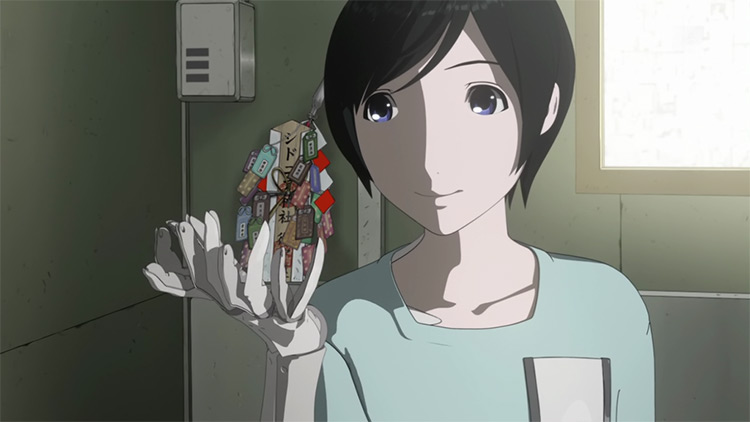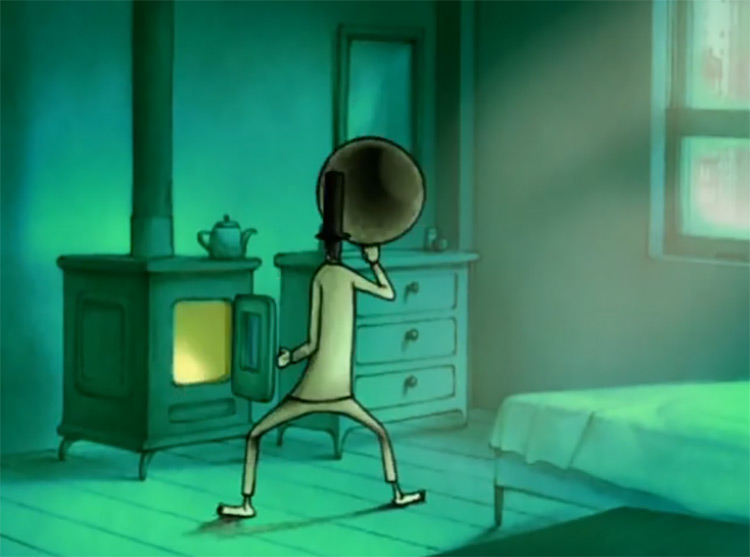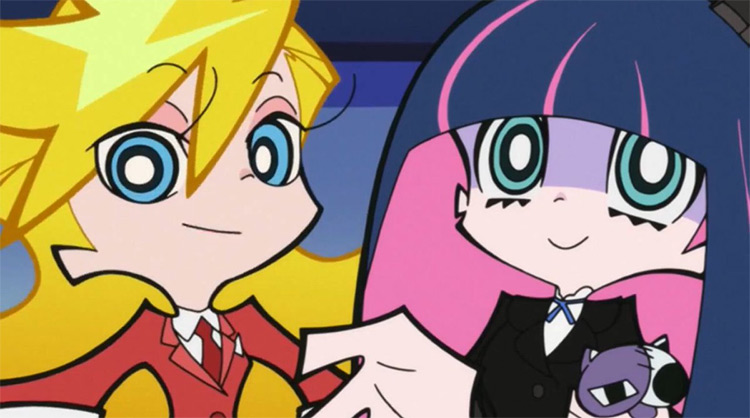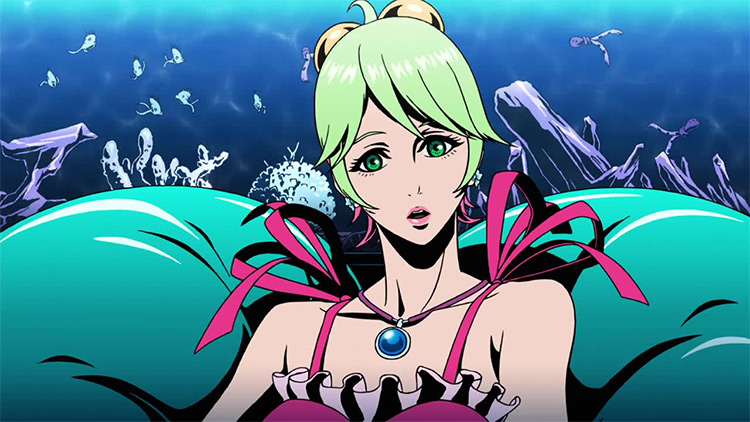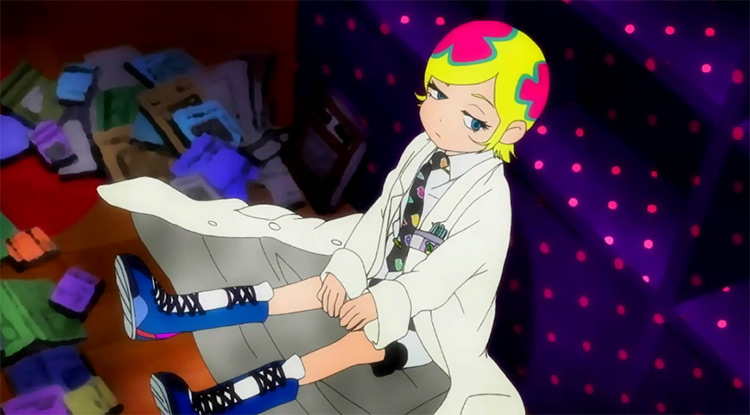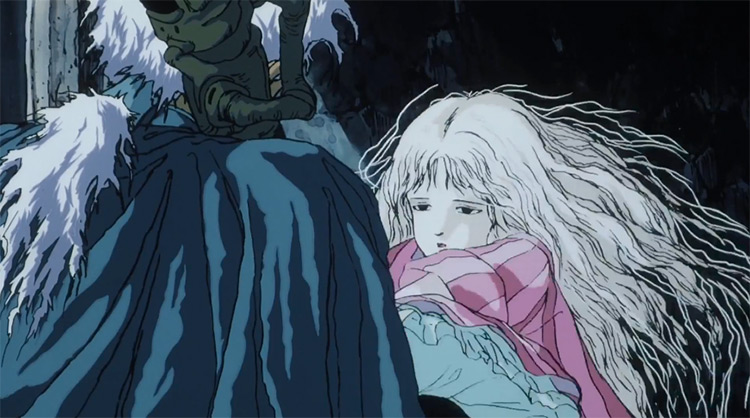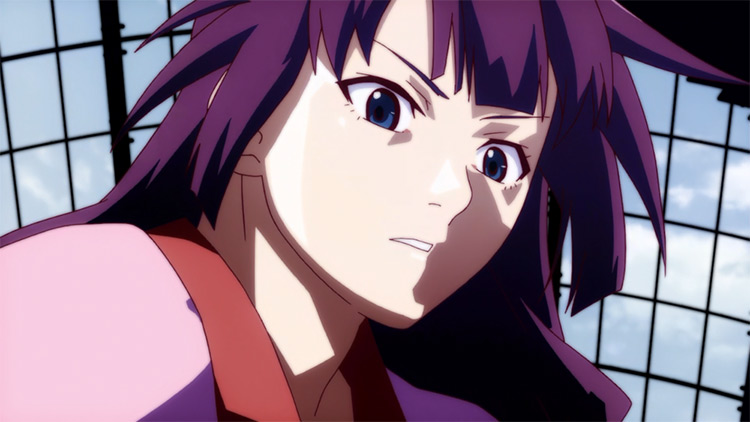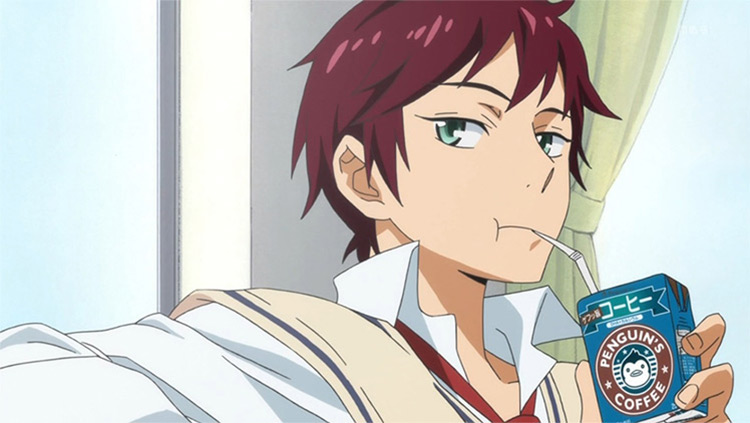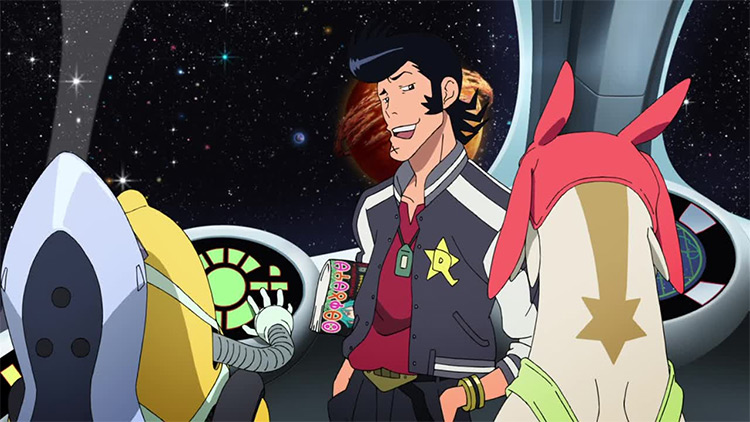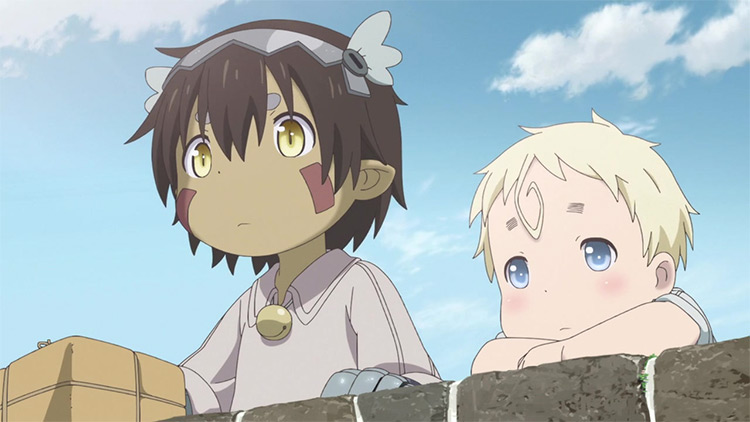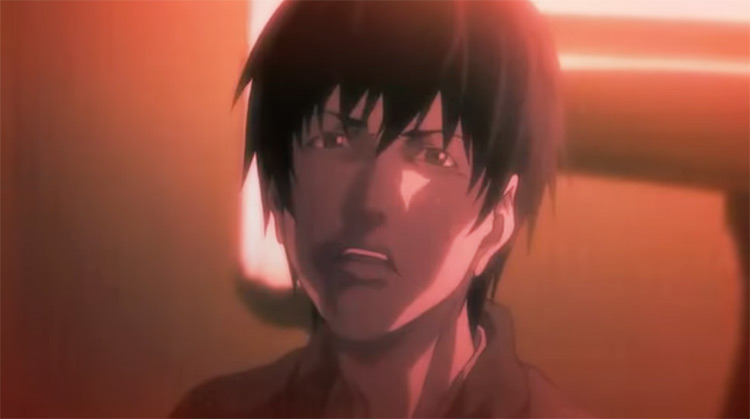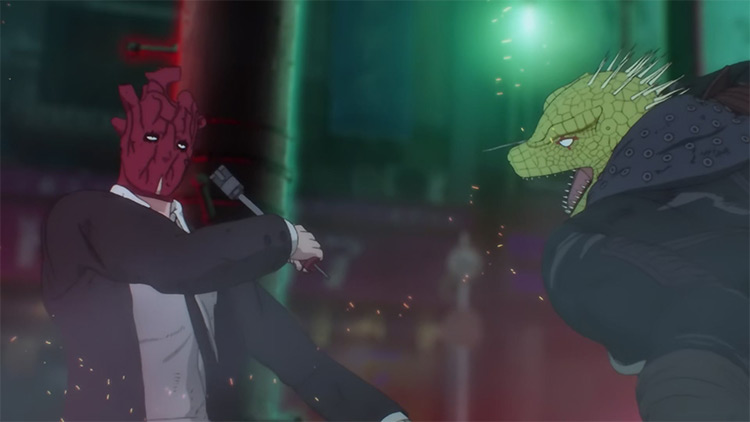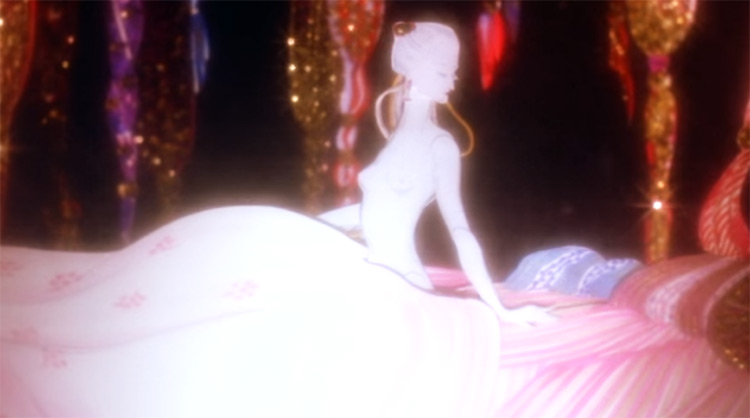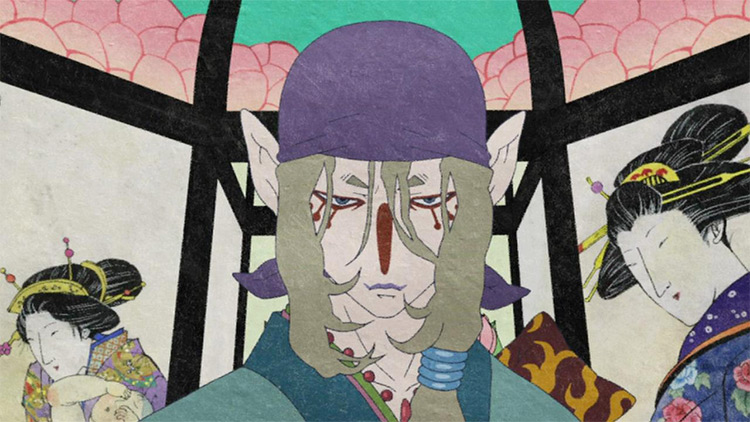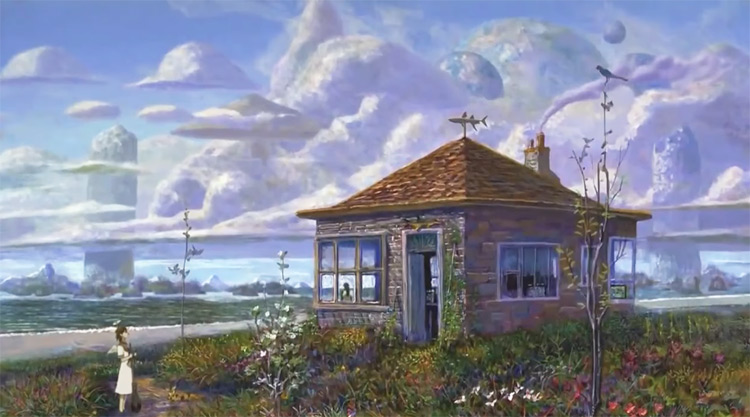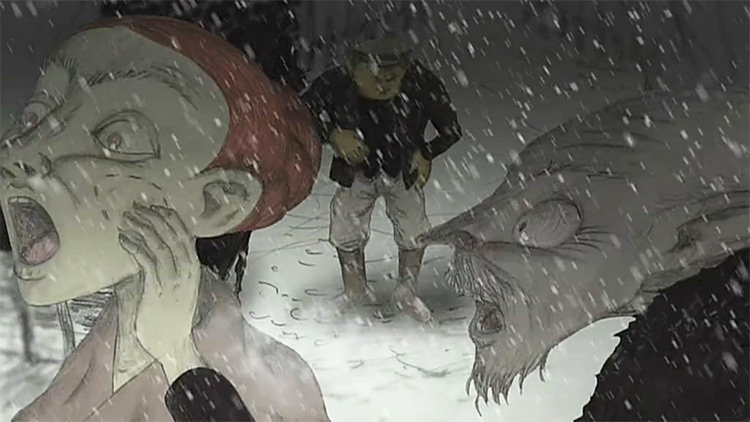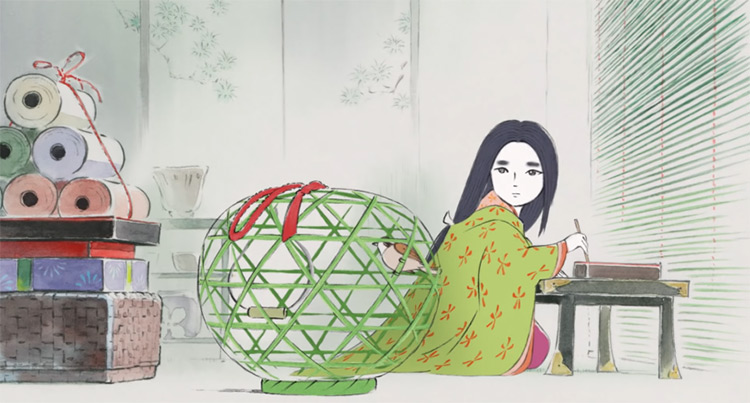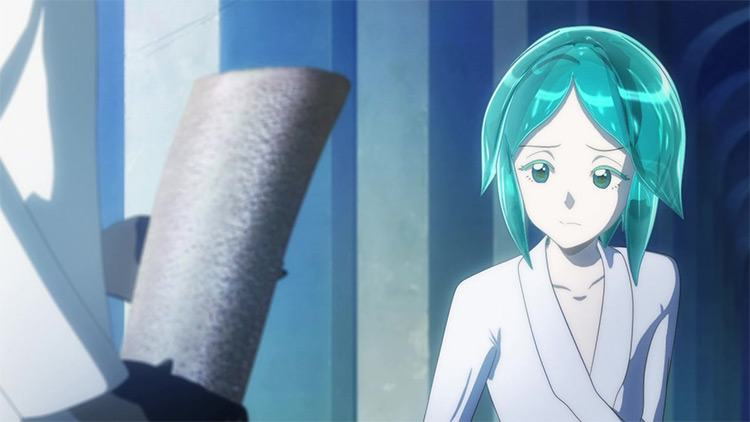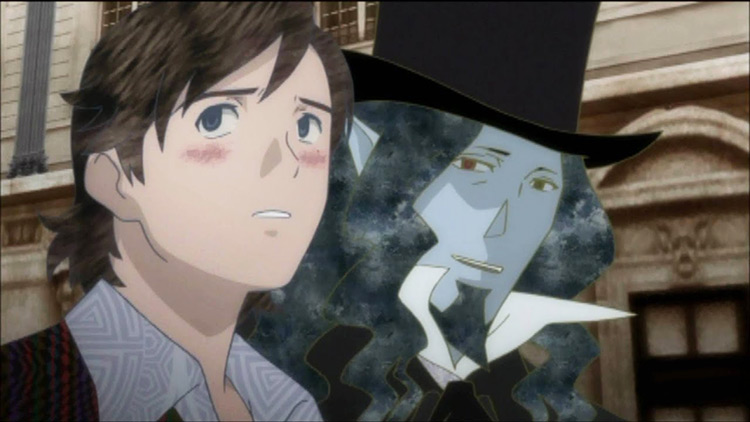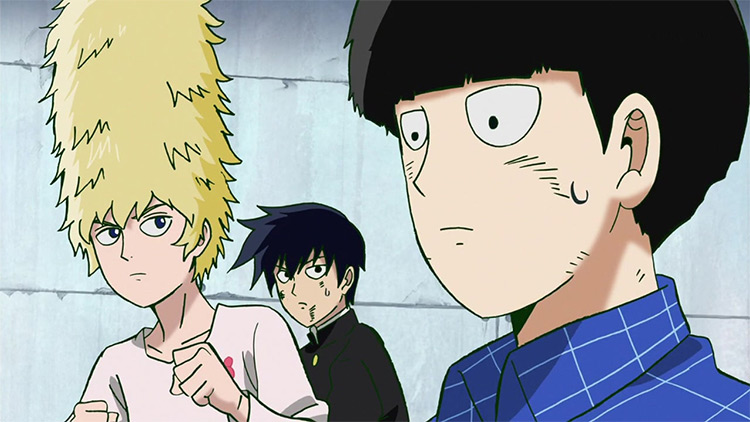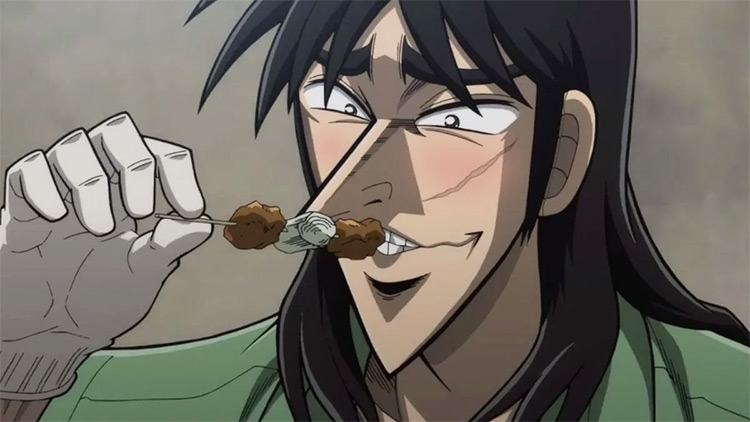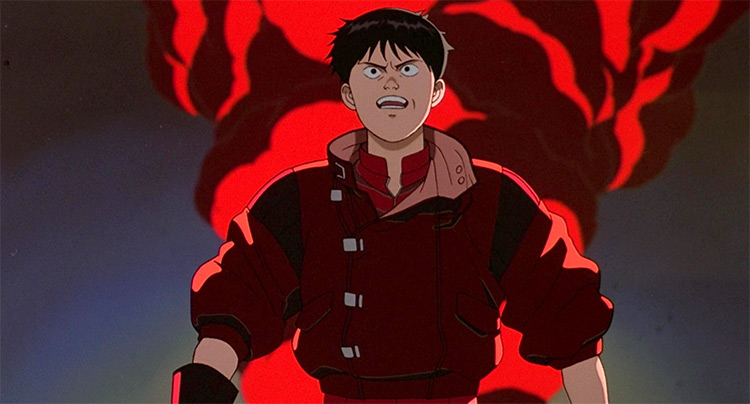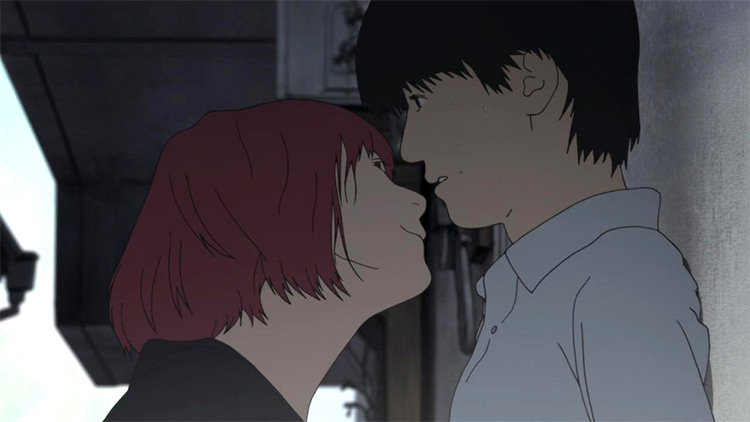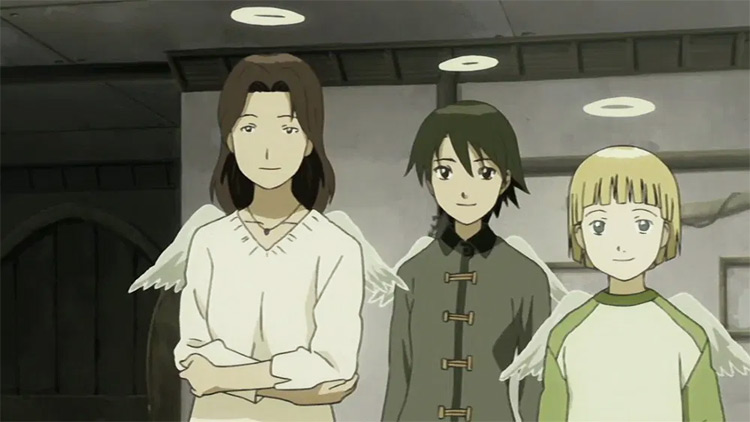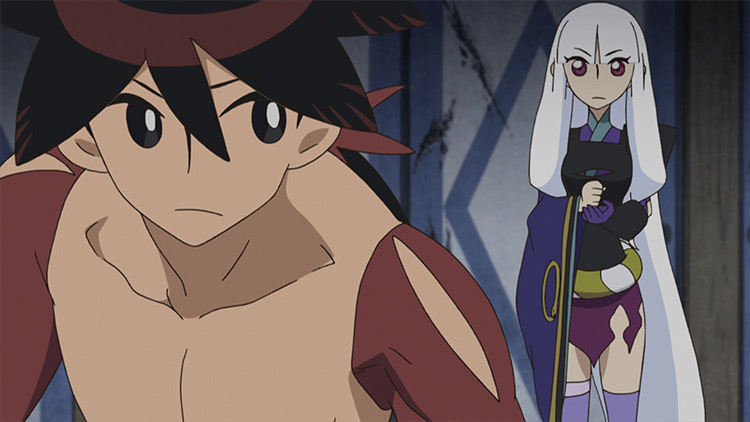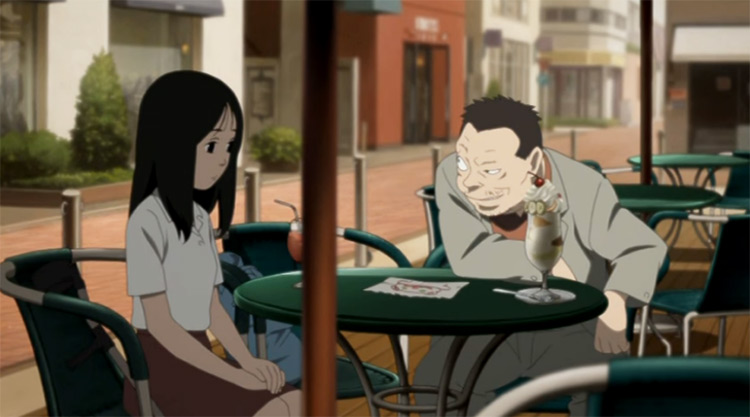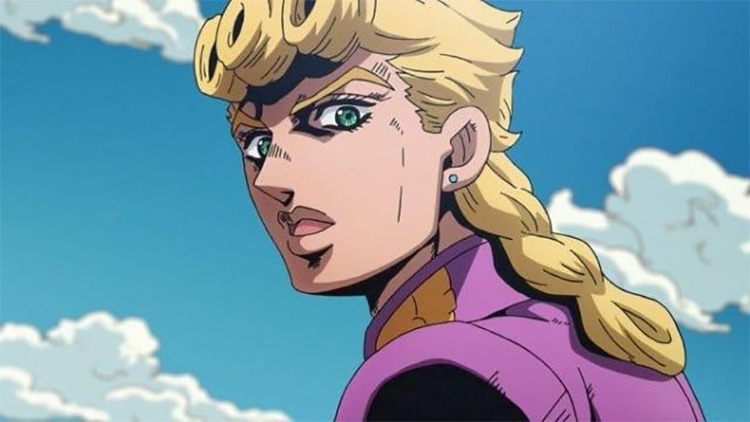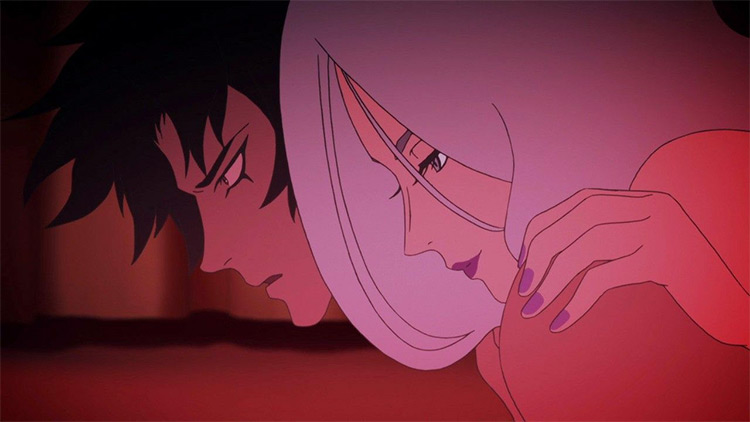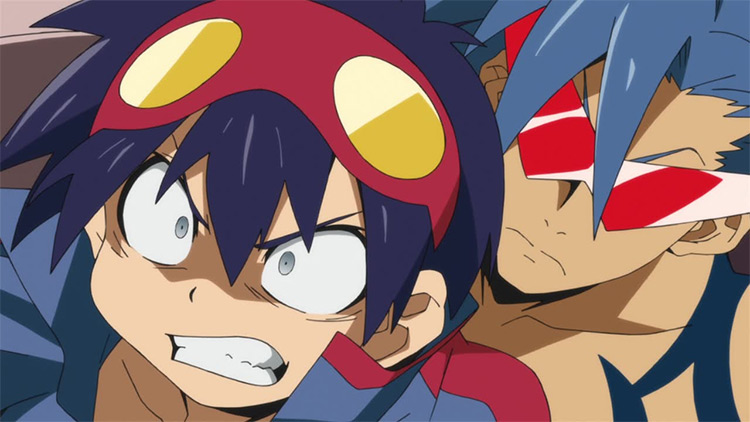And if we’re being honest, a lot of them look the same. The moefication of anime – and later the renown A1-Pictures face – have led to a consensus held by some that all anime look the same. I’m here today to disprove this, and suggest thirty (+) anime that will scratch the aesthetic itch I know you have. So without further ado!
30. Polygon Pictures Works
There are many people in the anime community who dislike the animated efforts of Polygon Pictures. While I agree their style can result in many similar looking characters, it’s in the action sequences and set pieces that their particular vision of anime shines. You have Ajin, a supernatural terrorist thriller with fantastic sound design and a very satisfying conclusion. You have their best work, Knights of Sidonia, to entertain you with incredible space battles and surprisingly immersive worldbuilding. There’s the Blame! movie and Godzilla trilogy to keep you happy if you’re looking for a blockbuster. Or even the underrated Levius, a by-the-numbers boxing anime in the vein of Hajime no Ippo and Megalo Box. From the shadowy apparitions found in Ajin, through to the colossal Godzilla himself in all his gargantuan glory, Polygon have proven themselves fantastic at providing a sense of scale. Here’s hoping they can refine their style further, especially with a third season of Knights of Sidonia on the way.
29. Kunio Katou Works
Kunio is a relatively unknown indie anime artist behind an impressive variety of short, poignant, and beautiful movies. Each bears his trademark style: a paper-esque aesthetic, thin or portly imaginative characters in an absurd world. And all carry meaning unique to every viewer. Some standout works of his would include Aru Tabibito no Nikki – a collection of mini episodes about a travelling man exploring a bizarre world, interacting with the various alien cultures and individuals he encounters. And Tsumiki no Ie, the story of an old man constantly rebuilding his home to evade an ever rising sea-level. He’s a creative genius, relatively unrecognized, who deserves far more attention.
28. Panty and Stocking with Garterbelt
One of Gainax’ last offerings before a majority of the staff left to form Studio Trigger, Panty & Stocking is a balls-to-the-wall comedy with constantly engaging animation and vibrant characters. Crude is the name of the game. And whether it’s the sex-fueled Panty Anarchy or her gluttonous sister Stocking, you’re sure to hear so much vulgarity that it’d even make an edgy teen old blush. The distinct line work, emphatic use of color, and constantly changing art styles (from Power Puff Girl to Traditional Gainax) makes this a stylistically unique anime that’s always worth a shot. You either love it or you hate it. Or you’re indifferent – I don’t know.
27. Redline
Redline is a masterpiece miracle of animation seven years in the making. At the time of finalization, more than 100,000 drawn frames had made their way into the film. As such, Redline is one of the most kinesthetically and audio-visually pleasing anime to ever be made. It’s fluid, constantly in motion, and expressive. With a diverse design palette, and featuring some incredible world building, Redline does in under two hours what many anime can’t do with 4x that screen time. Its sound design is top-notch, too. Giving every single action or stop or pause a weight, a true experience that immerses you further. I cannot sing praise enough for this film.
26. Welcome to Irabu’s Office
This is one of the more bizarre entries on this list, despite being grounded firmly in reality. Irabu’s Office is a mixed-media anime, using real-life models blended with beautiful animation and still shot composition (similar to South Park) to tell an episodic story revolving around a psychologist’s office. Every episode introduces a new character beguiled by their own psychological issue, and Dr. Ichiro Irabu proceeds to diagnose and treat them. It’s informative, funny, and stylistically wacky enough to keep your attention. Please give this overlooked gem a try!
25. Angel’s Egg
Designed by Yoshitaka Amano of Final Fantasy fame, and directed by Mamoru Oshii (and featuring his distinct nihilistic flair), Angel’s Egg is a speculative film with a relatively short run time. It’s lacking in much story, serving more as a deliberate and slow paced musing over existence, rife with symbolism and imagery. But that’s what makes Angel’s Egg so fascinating as an artistic piece: with its true meaning deliberated even to this day. The background art and character designs blend so seamlessly and wonderfully, that nearly every frame is wallpaper worthy.
24. Bakemonogatari
The Bakemonogatari series spans multiple series and films. And it isn’t chronologically told, meaning straight away it’s stylish in its narrative. But that’s not where the style ends. Nisioisin’s magnum opus series, revolving around the supernatural and interpersonal dynamics of a group of friends in an otherwise unspectacular town, was granted a beautiful adaptation courtesy of Studio Shaft. They brought with them a unique cinematic vibe, with a masterful use of cinematography and direction unrivaled by most long-running anime. It’s constantly engaging owing to its perchance for comedic dialogue and winding soliloquies, making even the tamest episode exciting. That doesn’t mean it slouches when the action is needed… it excels there as well.
23. Mawaru Penguindrum
One of Kunihiko Ikuhara’s most respected works. Penguindrum is a bizarre story about two boys saving their sister laced with imagery and metaphors. Much like his other anime, subtext is key here – and it’s often in the things unsaid where we see the true character dynamics unveiled. A t the center of this stylishly obscure show is a ton of heart, but let’s reflect on that style. From CGI rendered little blue penguins invisible to all but the key characters, to all non-key players being personified as silhouetted people one might see at a train station, careful attentiveness is placed upon every small background item. This makes Penguindrum’s rewatch value staggering. And places it up there as a must watch if only for the mysterious experience.
22. Space Dandy
Without a doubt, this is Shinichiro Watanabe’s most artistically stylish production. The first season is dripping in artistic expression and creative uniqueness, from the character and alien designs down to the planets visited. But it’s the second season that pushes Space Dandy into greatness. Every episode is artistically unique and directed by a different esteemed member of the anime hall-of-fame, making it a truly innovative experience that wraps up with an unforgettable (and surprisingly touching) finale.
21. Made in Abyss
This was many people’s Anime of 2017, and that’s mostly owing to its style. That’s not to say it’s lacking in the narrative and world building department – not at all – but the production quality really pushed Made in Abyss from good to great. Each background is given a watercolor sensibility: a beautifully rendered world reminiscent of a Ghibli production, that works wonderfully in tangent with the cute yet unique character designs. This is all made even better by the exceptional sound design and musical direction that can take your breath away from a montage, or a single well-placed shot. Worth a watch on the merit of its audiovisuals alone.
20. Blue Literature (Aoi Bungaku)
What makes Blue Literature special is its anthological structure. Each episode begins with a real-life segment producer introducing what novel is being adopted – from Dazai’s ‘No Longer Human’ through to ‘Kokoro’ by Natsume Souseki – before launching into the respective arc. Each story features one of three different director and lead character designers, making every few episodes entirely different from tone to presentation to the ones before and after. Standouts include No Longer Human and Kokoro, led by Takeshi Obata (of Death Note and Bakuman); Sakura no Mori no Mankai no Shita, led by Tite Kubo (of Bleach); and Run, Melos!, led by Takeshi Konomi (of The Prince of Tennis). The stories discussed are dark, and important to Japanese literature as a whole. As such, it can be rather tonally dissonant at times. And might be best watched with breaks before arcs.
19. Dorohedoro
Dorohedoro is not pleasant. It’s dirty, grimy, bloody, and features a predominantly CGI-artstyle. Nonetheless, it’s exceptionally great for all these reasons. The Hole, as a setting, is not welcoming. And the surprisingly brilliant CGI and violently uncensored escapes only further illustrate that. This is all made better by a dark comedic undertone and some impressive attention to detail regarding openings and endings, featuring six different and brilliant ending songs and accompanying animation. Dorohedoro is equal parts edgy and hilarious, being so creative and unique that you can’t help but keep your attention trained on what’s going on. The original character designs(crocodile man, what the-) and environmental storytelling transfer across brilliantly. Though there is an absolute worth to checking out the original manga as it’s even sketchier and grimier than its animated counterpart.
18. 1001 Nights
Again, Yoshitaka Amano (Angel’s Egg, Final Fantasy) knocked it out of the park with a gorgeously short piece of meditative artwork. 1001 Nights is based on an art book authored by Amano depicting a wordless romance, amorous engagement, and aftermath. Its storytelling is interpretative, using barely-lucid and vividly psychedelic motion to convey love and emotion as opposed to dialogue. This is for the pretentious anime watchers out there – and speaking as one, this is a masterpiece of artistic form through this medium. The beautiful orchestral soundtrack, dense artwork, and empty narrative frame leave so much room for imprinting and observation. It’s very exhibitory in nature(a sex scene we’re all privy to, an emotional connection meant for only those present that we’ve intruded upon) and is a must-watch for any snobs or critics out there.
17. Mononoke
The Medicine Seller travels across Japan slaying Mononoke, evil lingering spirits. To exorcise, he must learn the specters Form and Truth and Reason. This short 12-episode anime covers his stays at an old inn, where he discovers a particularly malevolent gang of spirits called the Zashiki Warashi are. What follows is an intensely burst of brilliant color, contemplative cinematography, and truly unique artwork that makes Mononoke one of (if not the) best horror anime available to watch.
16. Iblard Jikan
Iblard Jikan is a tough sell. It’s certainly a dark horse among other Studio Ghibli anime: a 30-minute OVA with hardly any narrative. But in my opinion, this is among their greatest works. It’s a montage of Naohisa Inoue works set across the fantasy world of Iblan and features sparse animation nor story. Accompanied by a beautiful soundtrack (composed by Kiyonori Matsuo), you are taken across these fantastic lands and introduced to various societies and characters. Every frame is gorgeous. It’s an experience for you to turn your brain off to and just… Let go. I highly recommend this one for anybody previously swayed by my selling of 1001 Nights, as they’re fairly similar in direction and purpose.
15. Yamamura Koji Works
Much like Kunio Katou, Yamamura Koji is an independent anime short-filmmaker with a tendency towards the absurd and surreal. Works such as Atama Yama – wherein an elderly grouch of a man eats a cherry seed only for a tree to grow on his head – and The Old Crocodile (following a black and brown colored macabre story of decadence and unwavering hunger) perfectly exemplify his wonderful take on the weird. But it’s in his stellar adaptation of Franz Kafka’s ‘A Country Doctor’ that Yamamura Koji truly reached the limits of his style, effortlessly blending the Kafkaesque with his signature style to craft a distinct and brilliant retelling. Check it out(Inaka Isha) on YouTube, if you have the chance. Though reading the short story beforehand will heighten the experience.
14. The Tale of Princess Kaguya
This is one of Studio Ghibli’s greatest yet most overlooked offerings, owing mostly to its slow pace and unique art style. I believe both of those aspects are Kaguya’s strengths, providing a wonderfully sparse watercolour landscape with pale crudely drawn characters rich in white space and imagery. We follow the life of the impossible Kaguya, an enigmatic girl blessed at birth, in an epic retelling of a 10th-Century Japanese folk tale. The designs are reminiscent of a Masaaki Yuasa work, with each character given anatomical leniency to make characters even more expressive, and the score is somber and beautiful. From the lush green bamboo intro to the mystical finale, Princess Kaguya is a spectacle.
13. Studio Orange Works
If there’s a single studio one should point to in order to prove there’s a place for CGI in the anime market, it’s Orange. First, they blew people away with the wonderfully lush animation and art direction of Land of the Lustrous, before shattering all expectations with the wonderful Beastars. Each have fluid, cinematic animation and dynamic cinematography carried by brilliant stories and characters. It helps that each have stellar soundtracks, too, perfectly isolating the respective series from all contemporaries to make them truly unique. They’re like the final Japanese evolved form of animation pioneered by Rooster Teeth and their show RWBY… only with budget, experience, and source material backing them.
12. The Count of Monte Cristo
Gankutsuou – an adaptation of Alexander Dumas ‘The Count of Monte Cristo’ – is art. It’s a love letter to the ukiyo-e and Klimpt, exhibiting lush and fantastic fashion, with static textures overlaying distinct character designs. The sound and art direction takes the already exceptional story to scientifically fictive heights, creating a cinematic and grand presentation worth a watch for anybody. The dub is also a fitting option, with a well-realized cast utilized brilliantly.
11. Mob Psycho 100
This is One Punch Man’s other half (and in my opinion better half). It takes everything OPM does and embeds it with more heart. With a greater fleshed-out and flawed cast, all struggling with their inner demons. Every character is distinct. And the world of Mob Psycho 100 is rife with design flavor, where no two character might look the same. This, combined with the wonderful world building, make Mob Psycho 100 a more detailed franchise compared to its older brother. Studio Bones used this opportunity to show everything it’s got, providing some of the best sakuga in the business and wowing everyone with its audiovisual design – particularly during some of the city-shattering fights.
10. Nobuyuki Fukumoto Works
Kaiji and Akagi are two very similar works, generally speaking (and artistically). Kaiji follows the titular character who ends up gambling for his livelihood when he accidentally inherits the debt of a mutual. Taken by the Yakuza, his cunning, determination, and intelligence are pushed to the limit in a series of games where the stakes only rise. This, paired with his innate and newly-tapped gambling addiction, makes Kaiji a compelling and flawed individual – much like Nobuyuki Fukumoto’s other character, Akagi, a gambling prodigy who falls headfirst into the underground world of mahjongg gambling. Each series carried Nobuyuki’s distinct art and storytelling style, allowing loss to be a part of the experience. And conveying pure unhinged dread with exceptional ease. It’s a nerve-wracking emotionally riveting watch, made only harder by the garish (but ultimately lovable) character designs.
9. Akira
Akira is one of the most important properties in the anime industry, helping to reinstate the medium on the map of credibility by introducing it to the global market. It has inspired countless cinematic masterpieces in its time, and it’s due to many reasons. Firstly, the atmosphere and narrative is dense, crowding, and filled with imagery and symbolism. Secondly, the hand-drawn laboriously drawn cell animation is stellar. Still living up to expectations to this day, which is helped by the sound and character design too. And lastly, the dreadful depiction of Neo-Tokyo, a disheveled place wrecked by nuclear devastation. These hallmark qualities of Akira firmly cemented its place in Anime’s Hall of Fame, inspiring works such as Ghost in the Shell, Jin-Rou, and more.
8. The Flowers of Evil
Oshimi Shuuzou’s interpersonal horror about decadence, desire, and mental anguish, is one of my favorite manga of all time. When I initially saw the adaptation, and what it looked like, I was dismayed at what they had done to Oshimi’s wonderfully unique art style. And then I watched it. The Flowers of Evil is a masterpiece. They used rotoscoped animation by filming the entire show as if it were live-action, then drawing and animating over the top. At first, this can be disarming and unappealing… but bear with it and you’ll be treated to one of the most visually striking anime ever made. When it enters the surreal, the nightmarish, there’s a true sense of fear that creeps up your back. When characters talk, they feel like people. This is one of the best acted, one of the best directed, and one of the most narratively complex anime available.
7. Yoshitoshi ABe Works
Yoshitoshi Abe gained a reputation for his introspective art style, with his characters often looking forlorn and distinctly melancholic. This style translated perfectly to his worked Haibane Renmei and Serial Experiments Lain, that each deal with different aspects of reality and existence in a beautifully somber fashion. He also leant his style to Texhnolyze – a soul-crushing dystopia with ridiculous levels of apathy and violence – and Welcome to the NHK!, an introspective character study of a hikikimori suffering from depression and psychosis.
6. Katanagatari
Nisioisin’s (Bakemonogatari) other child Katanagatari is a short, self-contained narrative about two people searching for twelve Deviant Blades. Across the span of a year, we see the protagonists grow comfortable and reliant on one another in a wonderfully animated Edo-era epic. Every character is given a distinct style(particularly in regards to eye design) and have unique personalities. This all plays out atop a beautifully crafted environment that’s constantly changing with the seasons and locations in their travels. This is a must watch, in my eyes. Mostly for its heartwarming yet contemplative approach to storytelling, strengthened by its characters and comedy.
5. Satoshi Kon Works
Satoshi Kon left us too early. But at least he left behind a beautiful portfolio of creative and distinct works. He’s often regarded as one of the greatest directors of all time, and for good reason. No matter which of his works you watch, expect a wonderful care for film-making and a unique character design and color usage tackling esoteric issues or dilemmas. Paranoia Agent is a short TV-show with strong dementia and thriller undertones that utilized bathos perfectly, twisting and turning the narrative every episode to create a constantly engaging mystery. His contribution to Memories was a haunting ghost story set in space with a simply breathtaking art design and cinematic scale. Paprika directly inspired Inception in more than one way, telling a mind-bending, dream-hopping story of love and freedom with some of the best animation every seen in a film. Perfect Blue, similarly, inspired Black Swan with its disturbing and psychologically unnerving portrayal of para-social relationships. And Millennium Actress and Tokyo Godfathers are both wonderfully humanizing character studies, the former focusing on a fictional actress and the latter a group of homeless people.
4. The End of Evangelion
All of Neon Genesis Evangelion is worth a watch, and certainly stands out stylistically from contemporaries (especially in the latter half). But The End of Evangelion in particular strikes an artistically resonant tone with me. Perhaps it’s the disintegration of form as expressed narratively and artistically, with real people snipping in and out of absurd and violent imagery, all tied together with bizarre Christian imagery and metaphysical philosophical implications. Yeah, it’s probably that. Or it’s the designs of the Angels, of the Eva. This is Gainax at their very best, providing a beautiful cinematic experience at the end of what could have been just another series promoting toys… but ended up being so much more.
3. JoJo’s Bizarre Adventure
David Productions did the impossible. They took Araki Hirohiko’s artwork(following me?)and they animated it. Incredible, I know. But it was honestly thought to be a lost cause for the longest time. And thank God they were incorrect, because JoJo’s Bizarre Adventure is a dynamic masterpiece of art, music, sound, character, and story all amalgamated into a progressive tale of bettering oneself and fighting the odds. From the macho-Mad-Max style of Phantom Blood, through to the Greco-Roma-Italia designs featured in Golden Wind, JoJo’s is constantly reinventing, changing, and innovating.
2. Masaaki Yuasa Works
Masaaki Yuasa has made quite the name for himself, particularly throughout the 2010s. But his portfolio of work stretches back decades. His exuberant, distinctly rough style works perfectly in tandem with his trademark storytelling motifs of living in the moment and being a better person. Crayon Shin-chan was where he initially got his reputation, making an iconic character that has seeped into the Japanese consciousness for his crass yet still childish humor. But when Yuasa started approaching anime with an adult audience in mind, that’s where his masterpieces came from. We’ve got Devilman: Crybaby, a recent offering of unchecked violence and horror detailing the catastrophic inhumanities of warfare and the necessity for love and compassion. We’ve got Keep Your Hands of Eizouken!, exemplifying imagination through the medium to tell a love letter towards animation as a whole. His earlier offerings, Kaiba and Kemonozume, each tell tales of humanity and connection, with the former discussing topics of existentialism and identity and the latter serving as a Romeo and Juliet-esque narrative between monsters and humans. Mind Game, The Tatami Galaxy, and Walk On Girl, all revolve around living in the moment and seizing the day, with very similar styles and narrative structures. Ping Pong is a hyper-condensed sports story with some of the best competitive storytelling in anime. And Japan Sinks 2020 is a brutal if not misguided depiction of a country in collapse, and Ride Your Wave is a simple yet touching love story. Whatever you’re looking for, Yuasa has you covered. And his output is only increasing with the establishment of his passionate Studio Science Saru.
1. Tengen Toppa Gurren Lagann
This first place in my list could have gone to Studio Trigger works as a whole. But Tengen Toppa Gurren Lagann isn’t strictly Trigger, and their output has been a mixture of quality in recent years. Nonetheless, Tengen Toppa Gurren Lagann is one of the most artistically sublime anime ever made, and has inspired animation across the globe with its charm and over-the-top use of loose line work. It’s parodying mecha in the best way possible. Taking every hype element that makes those shows work and pushing down on the pedal. Every episode is visually striking, with unique character designs reminiscent of characters all across anime as a medium. And when it gets to its later arc – oh, boy! That animation is spectacular. This is a must-watch for any anime fan, just don’t take it too seriously. Because it really doesn’t want you to… and then you’ll end up taking it seriously anyway. Have fun!
